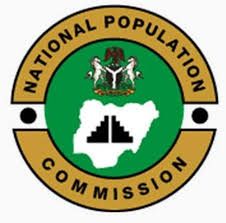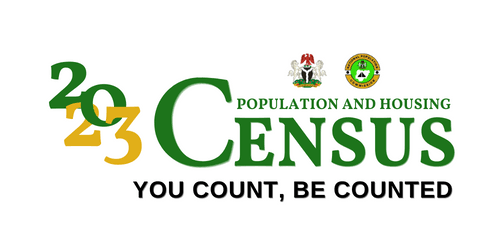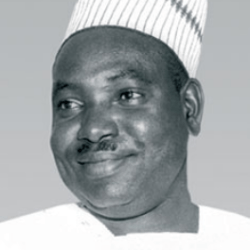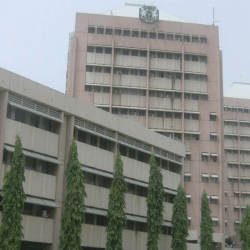The vensuses before 1921 were based on administrative estimates rather than on an actual enumeration. Post independence Censuses were taken 1962, 1963, 1973, 1991 and 2006.

The 1991 Census was conducted under Decree 23 of 1989 which set up the National Population Commission. It was conducted all over the country from November 27 to December 2, 1991. This was the most scientific and most acceptable Census until the 2006
Population and Housing Census.
In March 2006, Nigeria conducted another Population and Housing Census.
OVERVIEW OF THE 2006 CENSUS AND THAT OF 2023
.In 2006 Census for the tirst time, the use of GPS and Satellite Imagery to carve out Geo-referenced Enumeration Areas (EAs) was adopted. While, Machine-readable forms (OMR/OCR/ICR) were used to record information from respondents.

The 2023 Population and Housing Census will be Nigeria’s first Digital Census in planning and execution which implies a change in how the data on Population and Housing information are to be captured,
This approach started with the demarcation of enumeration areas covering the entire territorial space of Nigeria using mobile handheld device and geographic information system (GIS) and satellite imageries to create the digital census maps.
Definition of Census Population and Housing Census is defined as the overall Process of collecting, processing, tabulating, analysing and publishing the demographic, economic and social data of the population and housing units in a specific country or part of it without omission or repetition and assessing, classifying, analysing and publishing the data at a specific period of time called the Census Reference Point.
Main Objectives of the 2023 PHC
.Comprehensive and statistical data
Comprehensive and detailed statistical data on whole population and their demographic, social and economic characteristics by the least administrative or geographic division and related rates and indicators for policy-making. evidence-based planning and good governance
Necessary data to assess population change during the period between the censuses and provide benchmarks for monitoring the Sustainable Developments Goals (SDG)
Housing data for housing policy
Data on the housing units stock, its amenitites and characteristics related to living conditions, as well as basic data required to setting housing policy.
Main Objectives of the 2023 PHC…
.Comprehensive and updated frame
Comprehensive and updated frame for buildings, housing units and households by localities and different administrative divisions. This frame is necessary for designing and selecting the samples required for the implementation of the different household surveys.
.Database household
Database for each household that could be connected with the available maps through Geographic lnformation Systems (GIS)
2006 PHC METHODOLOGY
The methodology for 2006 Census was more scientiiç and computerized with the introduction of Geographic Information Systems (GIS).
The Commission conducted the 2006 Census using the Enumeration Area (EA) maps that were delineated during the 2004/2005 EAD exercise.
The 2006 data collection waS on paper
questionnaire, the questionnaire data were
converted into computer-readable torm
through scanning technology, incomplete or
inconsistent information was imputed, and
final census products (counts, cross-
tabulations, and sample public use
microdata files) were created
2023 PHC METHODOLOGY
The full digital methodology adopted for 2023 PHC is an improvement from the 2006 Population and
Housing Census, specifically;
.The National Population Commission will be deploying Electronie Data Collection Technology for
the 2023 Population and Housing Census. By this method, Enumerators will use PDAs (Parsonal
Digital Assistants) to collect information from respondents on a de-facto basis
This new methodology is based on Geographic Information System (GIS).
.It captures all buildings as well as their attribute data using a hybrid acquisition software namely The Census and Survey
Processing System (CSPro) and Census PAD on Personal Digital Assistant (PDAs).
2023 PHC METHODOLOGY
.Very High Resolution (VHR) Satellite Imagery of between o.1 and o.6 meters was used
for the demarcation exercise and was used as base maps, it has a resolution of 0.5m for
both built up and less built-up areas. This means that every object measuring o.5 meters
square and above will be visibly identifiable.
.Spatial and attribute data of features was captured using two main software applications.
(CSPro and EAD PAD) on computing tablets (PDA). The new EAD PAD Application
integrates both satellite imagery and questionnaire forms on the same computing tabiet
(PDA).
CSPRO AND Census PAD
.The Census and Survey Processing Systemn
(CSPro) is a public domain software package
used by organinations and individuals for
entering, editing, tabulating and
disseminating census and survey data.
.CensusPAD Application is a bespoke Data
acquisition package built for the
Commission. The technology used in
building the system is a combination of
Android Mobile App creation, Data Science
and Analysis and GIS
CSPRO AND CensusPAD
The CensusPAD will fetch Maps from the cartographic frame and
be used for the Building Numbering and Household Listing process
while the CSPro will be used to carry out the. Population and
Housing Enumeration Process. All data collected will be transmitted
first to the cloud utilising the cloud computing services and stored in
a database at the headquarters
OVERVIEW OF THE 2023 CENSUS INSTRUMENTS
i. NPC 01 Questionnaire (Population and Housing Census main
Questionnaire)
ii. NPC 07 Questionnaire (Building Numbering and Household listing forms)
iii. NPC 05 Questionnaire (Call back forms)
iv. NPC 02 Post Enumeration Survey Questionnaire
v. Instructional Manual (Enumerators Manual, Functionaries Handbook)
vi. Census Applications (CensusPAD and CSPro).
vii. The Dashboards for 2023 Population and Housing Census
NPC QUESTIONNAIRE HIGHLIGHTS
In the 2023 PHC, households are classified under five different types including
.Regular Households
.Institution long stay
.Institution short stay
.Floating /Transient and Diplomatic corps
Different questions have been assigned to each category. IDPs can be within a Regular
household setting, in an Institutional (Long Stay) setting or in a Floating/Transient Population
setting and has been captured under residence type.
Data capture is achieved with use of the following sections in the questionnaaire
NPC 01 Questionnaire (the main census questionnaire)
Household Demographic and Social Characteristics
Marltal Status
Literacy
Education
Economic characteristic
International and internal migration
Information Communications Technology
Diffculty in performing activities
Fertility and child survival
Survival status of the last child birth
Survival status ot parents
Mortality (household deaths)
Housing characteristics and amenities
Housing sanitation
Buildimg Numbering
Household Listing
PROCESSES IN CENSUS METHODOLOGY
Important processes in census instruments methodology are highlighted below:
- Map reading: The essence of map reading is for proper EA identificatcn to
ensure that boundaries of each EA are tracked and identified during canvassing
and also to ensure that appropriate attention is given to all features indicated on the map. - Building numbering/ household listing: This will be done with respect to each
building in the EA - Validation of building numbering and household listing
- Completing the main census questionnaire (NPC 01)
including the housing characteristics and amenities - Daily synchronisation of data with headquarters: Data
collected on the field will be synchronised on the cloud and
a dedicated server at headquarters.
The frequency of this synchronisation is encouraged to be at minimum once daily, though multiple time are
prererred.
However, due to the nature of some terrains, working in multi EAss and poor network connectivity which could present some difficulty for enumerators to meet up with their supervisors often, it is anticipated that dselays in syncing could occur.
ACTIVITIES ONGOING AND COMPLETED IN PREPARATION FOR THE 2023 PHC
.Enumeration Demarcation exercise in 773 local government areas (LGAS) of the 774 local government areas in Nigeria.
.Preparations of Census instruments and strategy documents.
.Capacity building to better equip staff for development of census related documents and other activities.
.The first, second pretests, validation of instrument and the trial census of 2023 Census instruments and procedures.
.The compilation of historical events
ONGOING PREPARATIONS AND PROPOSED PLAN
.A recruitment strategy is being designed for e-recruitment for wider and
balanced coverage.
.Training plan and modalities to include, virtual, e-learning, self-learning
and physical learning.
.Validation of the modified census instruments and processes.
.Preparation for the capacity building of Census staff towards the 2023
PHC
.Preparations for a National and State stakeholders Workshop
.Preparations for the Trial Census Enumeration, Data processing and
analysis
.Post Enumeration Survey (PES) and post-census Evaluation.





